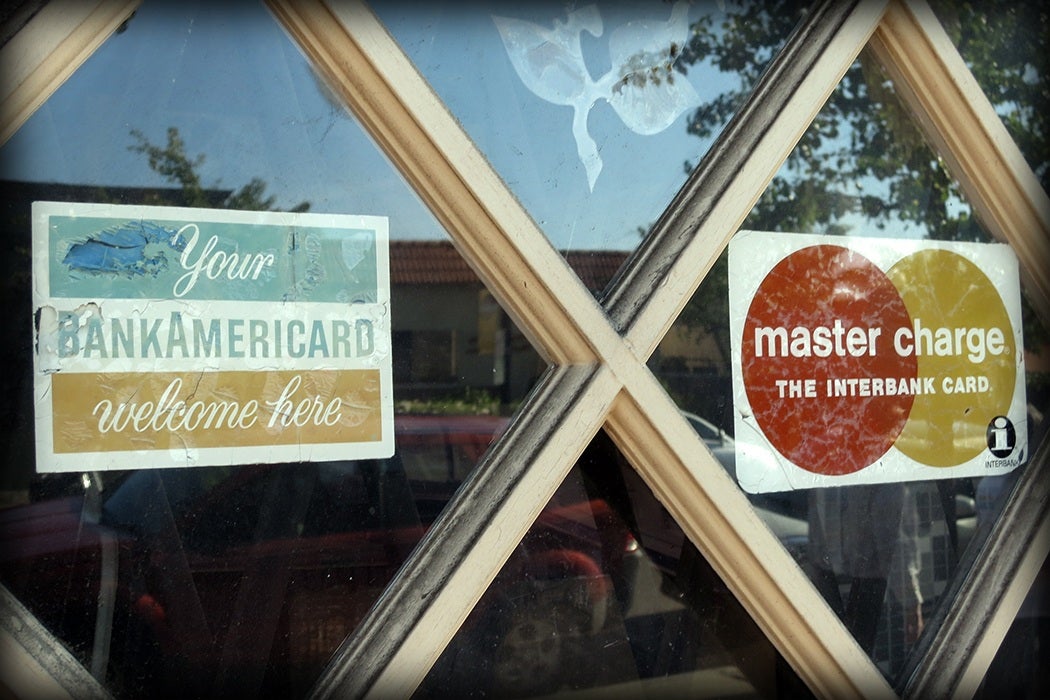It’s holiday shopping season—time for making lists, tying bows, and swiping credit cards. In a 2000 paper for Enterprise & Society, Timothy Wolters explains how the ubiquitous plastic rectangle came to be.
As consumer culture blossomed in the first half of the twentieth century, installment plans and other ways of making retail purchases on credit became increasingly popular. But these kinds of credit were offered through the retailers themselves, and the point was to encourage shopping, not to make a profit on the credit.
Wolters writes that this changed in 1949, when three partners launched Diners’ Club, a card that could be used at hotels, retail stores, and restaurants. Merchants paid for the privilege of accepting the cards, and customers also paid an annual fee. Local commercial banks soon followed suit. The cards caught on with small merchants who saw them as a way to compete with large department stores that had their own in-house charge accounts.
Early credit cards were mostly flimsy paper things. When Bank of America—then the world’s largest bank—first started planning a credit card program in the early 1950s, it came up with the idea of giving customers a metallic plate and a paper card. To charge the card, a retail clerk would imprint the image of the plate on a sales draft and then subtract the cost of the purchase from the credit limit listed on the back of the paper card. But the bank eventually decided to put the program on hold, partly out of concern that people wouldn’t want their credit limits visible for every check-out clerk to see.
When Bank of America finally rolled out its BankAmericard in 1958, it was made of plastic and dependent on an extensive telephone network created to allow for instantaneous communication between retailers and the bank’s account processing center.
Despite careful planning, Wolters writes, BankAmericard looked like a disaster at first. Fraud was rampant, and the percentage of delinquent accounts was five times as large as expected. Many large retailers didn’t want to be part of a program that threatened to undercut their own credit departments, and some critics complained about credit in general as a social evil. Just over a year after its kickoff, the head of the credit card program resigned.
And yet, the bank kept pushing the program forward. Between 1960 and 1961, it spent $3 million advertising the card while working to enroll more retailers with enticements like reduced merchant charges.
As it turned out, the bad early results had a hidden benefit. Many competitors had heard about Bank of America’s losses. When the card program became seriously profitable in the mid-60s, the bank kept its success quiet.
Still, Wolters writes, competition among banks eventually heated up. By 1970, Bank of America saw the wisdom in joining together with a group of other banks to form National BankAmericard Inc. That partnership eventually renamed the credit card, creating a brand that’s still visible at almost every retail outlet today: Visa.
Editor’s note: This story was updated to reflect JSTOR Daily’s current punctuation conventions.







